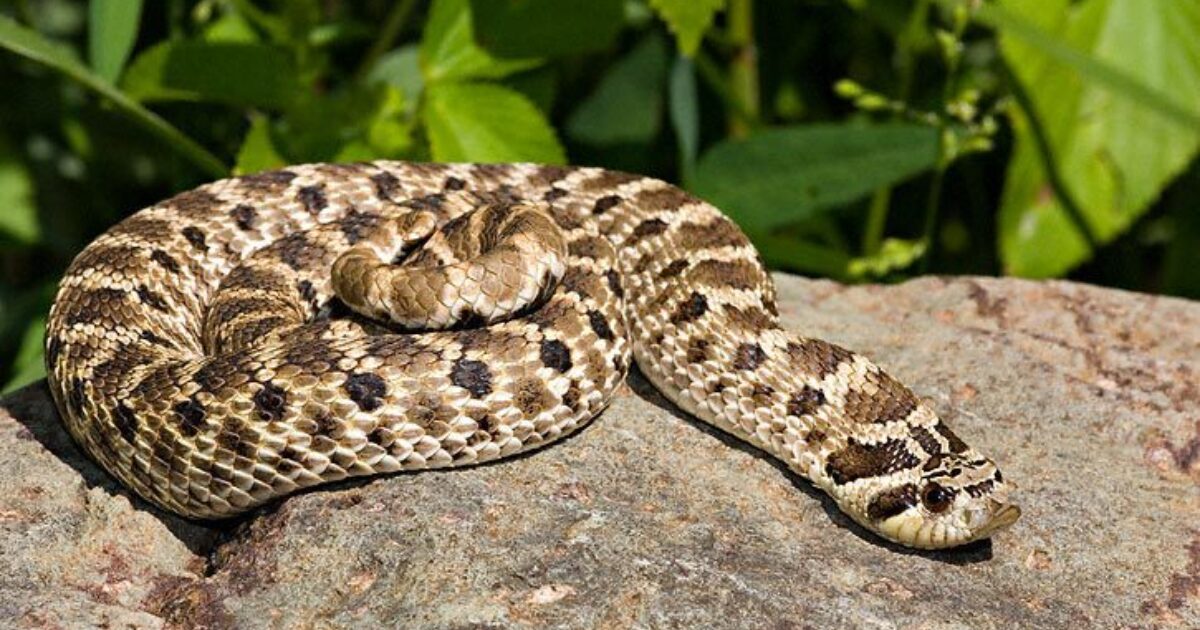
The Western Hognose snake is a fascinating reptile that captivates the imagination of animal enthusiasts around the world. With its unique physical characteristics and intriguing behaviors, the Western Hognose snake has earned its place as a popular pet and a subject of scientific research. In this article, we’ll dive into the world of Western Hognose snakes and explore 11 mind-blowing facts that will leave you in awe.From their distinctive snouts to their fascinating defense mechanisms, Western Hognose snakes have many secrets to uncover. Whether you’re a snake lover or simply curious about the wonders of nature, these facts will undoubtedly pique your interest and expand your knowledge about these incredible creatures. So, let’s embark on this exciting journey into the world of Western Hognose snakes and discover what makes them truly unique and captivating.
Key Takeaways:
- Western Hognose snakes are not venomous and can play dead to fool predators. They have a unique upturned snout and come in various colors, making them fascinating pets for snake enthusiasts.
- Found in North America, Western Hognose snakes are skilled burrowers with a taste for toads. They use interesting defensive displays and make captivating pets with proper care.
The Western Hognose is Not an Actual Venomous Snake
Contrary to popular belief, the Western Hognose is not a venomous snake. Despite its appearance, it possesses rear fangs and mild venom that is harmless to humans.
The Western Hognose Snake Can Play Dead
The Western Hognose has a unique defense mechanism – it plays dead! When threatened, it may flip onto its back, open its mouth, and emit a foul odor to deter predators.
These Snakes Have an Upturned Snout
One distinguishing feature of the Western Hognose is its upturned snout. This helps them burrow in sandy or loamy soils where they are commonly found.
Western Hognose Snakes Have Different Color Variations
The Western Hognose displays a range of color variations, including brown, yellow, orange, and even green. This allows them to blend into their surrounding environments and stay camouflaged.
They are Excellent Burrowers
The Western Hognose is highly skilled at burrowing. Their strong bodies and shovel-like snouts enable them to dig tunnels in loose soil, creating underground shelters.
Western Hognose Snakes Have an Appetite for Toads
A unique dietary preference of the Western Hognose is toads. They have specialized rear fangs that help them puncture the toads’ tough skin and consume their favorite meal.
These Snakes are Skilled at Playing Dead
Dubbed as “masters of deception”, Western Hognose snakes often resort to playing dead when faced with a threat. They can stay motionless for an extended period to fool their predators.
They Have Interesting Defensive Displays
In addition to playing dead, Western Hognose snakes have other intriguing defense mechanisms. They may flatten their necks, hiss loudly, and even strike with closed mouths.
Western Hognose Snakes are Found in North America
The Western Hognose is a native snake species found in the arid regions of North America, including parts of the United States, Canada, and Mexico.
They are Relatively Small in Size
Compared to other snake species, the Western Hognose is relatively small. They typically grow to an average length of 2-3 feet, making them manageable pets for enthusiasts.
Western Hognose Snakes are Captivating Pets
Due to their unique characteristics and docile nature, Western Hognose snakes are popular choices as pets. However, proper care and understanding of their specific needs are vital.
Conclusion
In conclusion, Western Hognose snakes are truly remarkable creatures with a number of fascinating traits. From their unique defense mechanisms and incredible adaptability to their interesting diet and harmless nature, they have captivated the hearts of reptile enthusiasts worldwide. Whether you’re a seasoned reptile owner or simply have a curiosity for the animal kingdom, Western Hognose snakes are definitely worth learning more about and appreciating. Keep in mind that these snakes require specific care and habitat requirements, so if you ever consider owning one, make sure to do thorough research and consult with experts in order to provide them with the best possible environment. With their striking appearance and endearing behavior, Western Hognose snakes are a true marvel of the animal world.
FAQs
Q: What are Western Hognose snakes?
A: Western Hognose snakes, also known as Heterodon nasicus, are non-venomous reptiles native to North America. They are characterized by their upturned noses and stout bodies, which set them apart from other snake species.
Q: Are Western Hognose snakes dangerous?
A: Western Hognose snakes are harmless to humans. Though they may puff up and strike defensively, they rarely bite and if they do, their bite is non-venomous and poses no serious threat.
Q: What do Western Hognose snakes eat?
A: In the wild, Western Hognose snakes primarily feed on amphibians, such as frogs and toads. However, in captivity, they can also be fed a diet of frozen-thawed mice or rats specifically bred for snake consumption.
Q: How big do Western Hognose snakes grow?
A: Western Hognose snakes are relatively small, reaching an average length of 2 to 3 feet. Males are typically smaller than females, with the latter reaching lengths of up to 4 feet.
Q: What kind of habitat do Western Hognose snakes need?
A: Western Hognose snakes require an enclosure that mimics their natural habitat. This includes a substrate that allows burrowing, a temperature gradient, and hiding spots. It’s important to provide a secure enclosure with proper ventilation.
Q: Are Western Hognose snakes good pets?
A: Western Hognose snakes can make great pets for reptile enthusiasts. They are generally docile, easy to handle, and have unique behaviors that make them interesting to observe. However, owning any pet snake requires dedication, proper care, and knowledge of their specific needs.
Fascinating creatures abound in the animal kingdom, from the unique defense mechanisms of Western Hognose snakes to the captivating world of herpetology. Pet snakes like Ball Pythons make intriguing companions, while Hognose snakes continue to amaze with their extraordinary adaptations. Dive deeper into the realm of reptiles and amphibians, uncovering mind-blowing facts that will leave you in awe of these incredible creatures.
Was this page helpful?
Our commitment to delivering trustworthy and engaging content is at the heart of what we do. Each fact on our site is contributed by real users like you, bringing a wealth of diverse insights and information. To ensure the highest standards of accuracy and reliability, our dedicated editors meticulously review each submission. This process guarantees that the facts we share are not only fascinating but also credible. Trust in our commitment to quality and authenticity as you explore and learn with us.


